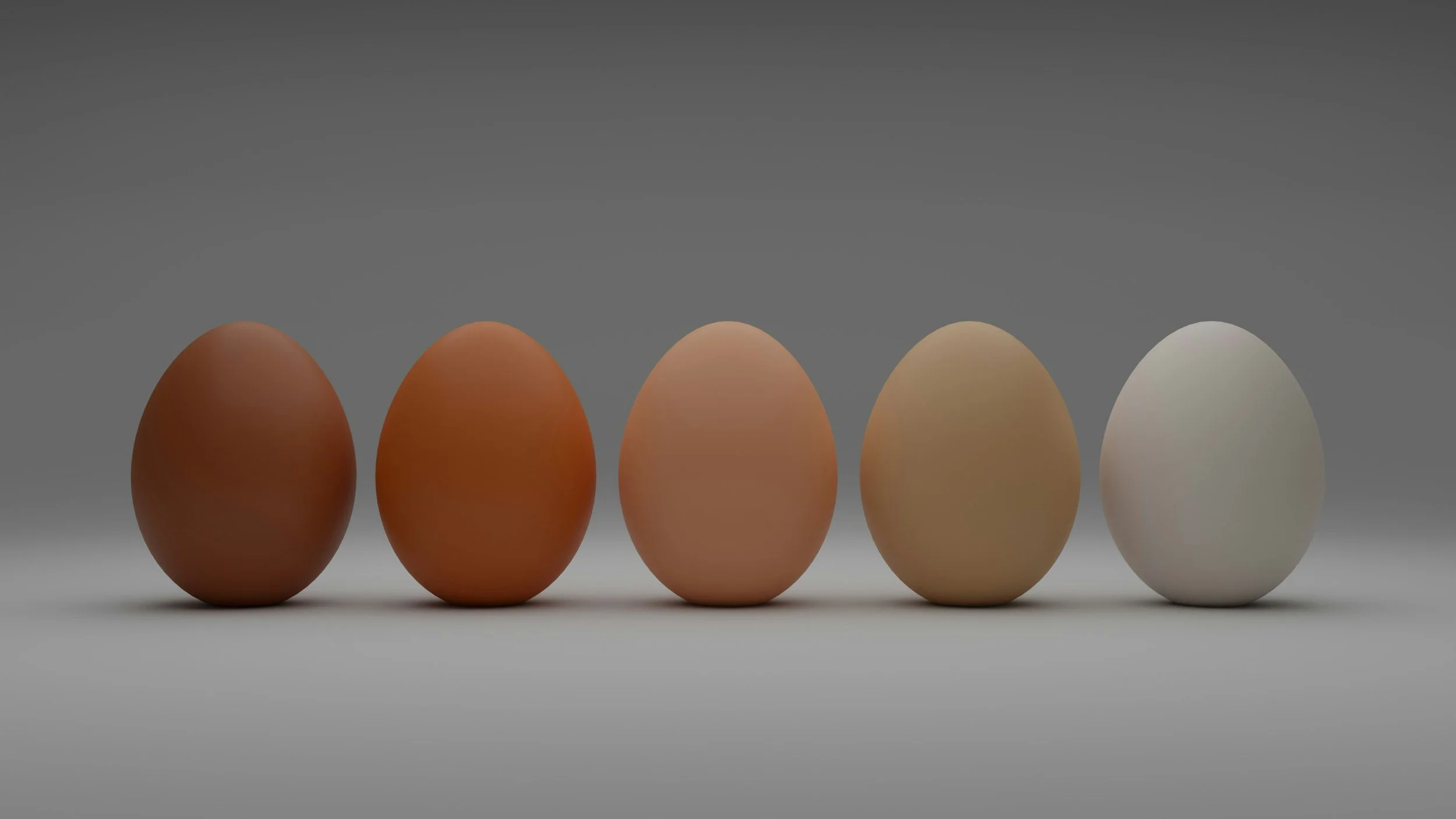Are You Too Old to Get Pregnant? A TEAM Perspective on Advanced Maternal Age (AMA)
Of all the acronyms you’ll encounter in the fertility world, AMA is the most WTF
It’s no secret that age affects your fertility. It’s part of your natural design, but if you’re in your 30s or 40s and struggling to get pregnant, you’re probably asking yourself - and Dr. Google, are you *too* old?
It’s a question loaded with fear and uncertainty, one that probably has you going over your past choices wondering what you could have, should have, would have done differently if only you’d known it would be so hard now. But here’s the truth: while age can present unique challenges, it’s only one part of your fertility picture. As long as you’re still having periods, TEAM can help you improve ovarian function, hormone balance, and endometrial receptivity increasing your chances of conceiving.
Traditional East Asian Medicine (TEAM) can help you pause and even turn back the clock on cellular aging. TEAM for Fertility uses targeted nutrition, supplementation, circulation-promoting exercises, and at-home acupressure protocols that are designed to:
nourish your metabolism to support follicular growth and development at the cellular level
regulate hormone production and detoxification
reduce oxidative damage and inflammation that may be impacting genetic integrity
restore proper flow of blood and energy to your ovaries and uterus, and
reverse the effects of aging on your fertility, reignite hope, and increase your chances of getting pregnant each month.
What Happens to Your Fertility As You Age?
Advanced Maternal Age
While I hope this hasn’t happened to you, it’s not uncommon for women over 35, and especially women over 40, to be dismissed out of hand by OB/Gyns and REs for hoping to get pregnant naturally. Afterall, from their point of view, you’re born with all the eggs you're ever going to have and that number is on a constant decline from the moment you take your first breath. Time marches on and you’re the age that you are. It’s pretty depressing and pretty disheartening.
And yet… we all know women who have had babies later in life. What makes them different?
Turns out there are many factors that affect the aging process and your fertility potential and while you can’t change the past, you can develop new habits and strategies to optimize your chances of getting pregnant.
What is Your Ovarian Reserve?
You were born with approximately 1 to 2 million primordial follicles, the single cells that are the very first stage of follicle and egg development. As you approached puberty, these follicles became activated and many started to mature all at the same time. As they did, certain follicles became dominant while others fell behind and were reabsorbed. One dominant follicle eventually reached full maturity and released the egg from within. A couple weeks later, you had your first period and the next batch of follicles marched on towards maturity.
This process happens over and over again as new waves of primordial follicles are awakened. They grow and develop until one takes the lead and becomes poised for ovulation. This involves a huge amount of energy and nutrition to support the rapid cell division and maintenance of genetic integrity throughout development. In your young adulthood these waves of awakened follicles come on like a tsunami powered by the natural exuberance of youth, by the time you reach your third decade when the effects of your lifestyle and experiences have become embedded in your physiology, the waves are gentler, more closely resembling the changing of the tides.
How Is Ovarian Reserve Measured?
Your ‘ovarian reserve’ is the estimated number of follicles that have reached the antral stage of development prior to ovulation. It is these antral follicles that are activated by follicle-stimulating hormone (FSH) to heed the final call towards ovulation and respond with the production of estrogen which signals the release of luteinizing hormone and the thickening of your uterine lining to prepare for implantation.
Ovarian reserve can be estimated by blood tests to evaluate anti-mullerian hormone (AMH), follicle-stimulating hormone (FSH), and estradiol, or by visually assessing the ovaries via ultrasound. Anti-Mullerian hormone helps to regulate follicular development by slowing down the recruitment of primordial follicles. Low levels of AMH allow more follicles to start the process of development towards ovulation, essentially burning through them faster and presumably leaving fewer potential eggs behind for future ovulation.
Follicle-stimulating hormone is sent from your pituitary gland in your brain to your ovaries to initiate the last stage of development needed by the follicle to achieve ovulation. High levels of FSH indicate that there isn’t enough follicular development, presumably because there aren’t a sufficient number of follicles available to respond to its effects. Without proper follicular development there isn’t enough estrogen produced to turn off the release of FSH and trigger the surge of luteinizing hormone that results in the release of the egg from the follicle.
Estradiol is the form of estrogen produced by your developing follicles as they grow and mature. This estradiol acts as a chemical messenger to your pituitary gland in your brain to turn off the release of FSH and to trigger an LH surge to initiate ovulation. It also acts as a messenger to your uterus to begin thickening the endometrial lining in preparation for implantation should fertilization occur. Low levels of estradiol indicate that not many follicles are developing and are another sign that your ovarian reserve is ‘low’.
An Antral Follicle Count (AFC) can be performed via ultrasound in the first few days of your cycle (typically days 2-4) to visually assess the ovaries and to evaluate how many antral follicles are present. Antral follicles measure about 2-10mm in diameter and remain fairly consistent from cycle to cycle. An experienced ultrasound tech can reliably evaluate the number of antral follicles present in each ovary.
Taken together, AMH, FSH, estradiol, and AFC test results are used to ‘determine’ your ovarian reserve. Low AMH, high FSH, low estradiol, and low AFC are all indicators that your ovarian reserve is low. For most OB/Gyns and REs, this determination is the final say on whether or not you’ll be able to conceive. TEAM offers a more optimistic perspective - your eggs aren’t gone, they’re just sleeping.
What is Egg Quality?
Probably the only thing worse than being told you don’t have enough eggs is being told that the ones you do have aren’t good enough. ‘Poor egg quality’ is the eviler twin of diminished ovarian reserve and another common factor that contributes to ‘age-related infertility.’
What does it mean to have poor egg Quality?
Poor egg quality refers to the decreased potential of your eggs to develop into healthy, viable embryos. At a certain point, either due to the natural aging process, lifestyle factors, or other health issues, the chromosomal integrity and cellular health of your eggs declines, making successful fertilization and embryo development more challenging.
The key factors that impact the quality of your eggs are your nutritional status, environmental influences, stress levels, and your overall metabolic health which directly affect the mitochondrial function and chromosomal stability of your follicles and eggs.
Mitochondria are the power source of all cell activity and their function is vital for providing the energy needed for cell division and growth of your eggs and follicles. When mitochondria become damaged or don’t get the nutrients they need to function properly, the quality of your eggs begins to decline.
Mitochondrial damage can come from toxins in your environment such as cigarette smoke, air and water pollution, and common ingredients found in everyday bath, body, and household products. Nutrients vital to mitochondrial function include CoEnzyme Q10, the B Vitamins, omega 3 fatty acids, vitamin E, magnesium, and antioxidants.
Chromosomal stability is vital to the quality of your eggs because it is the chromosomes that provide all the genetic information needed to carry out every stage of development of a fertilized egg. During the development of your egg and follicles prior to ovulation, the chromosomes of the egg cell are essentially unwound, divided in half, and rewound into their condensed state so that the resulting mature egg ends up with 23 chromosomes. If there is any irregularity or imperfection in this process the resulting egg may not have the required information needed to develop properly should fertilization occur.
Of course, because sperm supplies the other 23 chromosomes required for the development of a healthy embryo, chromosomal stability is of equal importance for men and much of the same nutritional and lifestyle applies to them as well. More on that in a future article.
The TEAM Perspective on Fertility and Aging
Western medicine may be all about the bummers if you’re of a certain age, but TEAM sees things in a more positive light.
Age is just a number, not a judgement or a sentence…
In TEAM, fertility is closely tied to the health of your Kidney system, or “Essence.” This system, though related to your physical kidney organs, encompasses a much broader range of functions and serves as the foundation of your reproductive vitality. The strength and function of your Kidney system does naturally decline with age, but TEAM doesn’t view this as irreversible.
By strengthening the Kidney system, promoting nutrient-rich blood flow to your ovaries, and regulating the hormonal imbalances that are affecting your fertility, TEAM helps restore your vitality and increases your chances of becoming and staying pregnant.
Foods to Support Egg Quality
There are certain nutrients that your follicles and eggs need to grow and develop properly. While most traditional diets regarded the foods highest in these nutrients as sacred fertility foods, the typical modern diet is lacking in many of them. Incorporating them into your diet now can have a profound impact on the health of your ovaries and the quality of your eggs.
Grass-fed beef
Iron, Zinc, B Vitamins, CoQ10 to improve ovulation and supports energy production in egg cells.
Chickens (organic)
Choline, Protein, B Vitamins to repair cells, support hormonal health, and enhance DNA methylation.
Fatty fish (salmon, mackerel)
Omega-3, DHA, EPA, Vitamin D, Selenium, Iodine to support mitochondrial energy production, reduce inflammation, and regulate hormones.
Organ meats (liver, heart)
Retinol (Vitamin A), Iron, B12, Zinc, CoQ10 to boost mitochondrial function, improves blood flow, and aid hormone production.
Nuts (pistachios, almonds)
Vitamin E, Magnesium, Zinc, Omega-6, Antioxidants to protect eggs from oxidative stress, improve blood flow, and reduce the effects of stress.
Seeds (chia, flax, pumpkin)
Omega-3, Zinc, Magnesium, Vitamin E, Fiber to reduce inflammation, support ovulation, and aid hormone production.
Eggs (especially yolks)
Choline, Vitamin D, B12, Selenium, Retinol (Vitamin A) to support DNA methylation, hormone regulation, and DNA repair.
Cooked Dark leafy greens (spinach, kale)
Folate, Magnesium, Vitamin K1, Iron, Calcium to support DNA synthesis, reduce stress, and improve blood flow.
Citrus fruits (oranges, lemons)
Vitamin C, Potassium, Bioflavonoids to neutralize free radicals and protects eggs from oxidative damage.
Berries (blueberries, strawberries)
Vitamin C, Anthocyanins, Antioxidants, Fiber to shield eggs from oxidative stress and support cellular health.
Bell peppers, broccoli
Vitamin C, Folate, Beta-Carotene, Fiber to enhance DNA repair and support egg development.
Avocados
Vitamin E, Magnesium, Monounsaturated Fats to protect eggs from oxidative damage and reduce the effects of stress.
Brazil nuts (1-2 per day)
Selenium, Vitamin E, Magnesium to enhance DNA repair and neutralize free radicals.
Oysters
Zinc, Selenium, Vitamin B12 to support ovulation and hormone balance.
Lentils, chickpeas, quinoa (properly soaked)
Folate, Iron, Protein, Fiber, Zinc to aid DNA synthesis, improve blood flow, and provide building blocks for cell repair.
Wild mushrooms (Chanterelle, Maitake, Shiitake, Lion’s Mane, Reishi, etc.)
Vitamin D, Selenium, Antioxidants to reduce inflammation, enhance immunity, regulate hormones and support ovarian follicle development.
Dark chocolate (70%+ cacao)
Magnesium, Iron, Flavanols, Antioxidants to improve blood flow, reduce the effects of stress, and support hormonal regulation.
Exercises to Improve Egg Quality
Spinal Twist to Increase Circulation to Ovaries
The Qi Gong Spinal Twist is a gentle yet powerful movement that promotes circulation through the pelvis, improves spinal flexibility, and releases tension in the body.
How To Perform the Spinal Twist:
1. Prepare Your Space and Body
Find a quiet space where you can stand comfortably with enough room to move your arms.
Stand with your feet shoulder-width apart, knees slightly bent.
Keep your arms relaxed by your sides and your spine tall and upright.
2. Center Yourself
Take a deep breath in through your nose and exhale slowly through your mouth.
Relax your shoulders and bring your awareness to your body, feeling grounded through your feet.
3. Initiate the Twist
Begin twisting your upper body gently from side to side at the waist With the movement coming from your legs and pelvis.
Let your arms swing naturally with the movement, like soft pendulums.
As your torso twists to one side, allow the opposite arm to lightly tap your lower back or hip, while the other arm taps your abdomen.
Exhale through your nose as your body completes a twist to each side and inhale as you return to center.
4. Maintain a Fluid Rhythm
Gradually build a comfortable rhythm, twisting smoothly without force.
Allow your head to follow the twist, looking gently over each shoulder as you turn.
Feel the movement originating from your pelvis and spine, and let the rest of your body flow naturally.
5. Breathe with the Motion
Inhale as you transition through the center, exhale as you twist to each side.
Keep your breathing deep, steady, and relaxed.
6. Gradually Slow Down
After about 1–3 minutes (or longer if comfortable), start reducing the range and speed of your twists.
Return to a neutral standing position, allowing your arms to rest naturally at your sides.
7. Stay Consistent
Do this exercise daily, at least once, but as often as you like.
Tapping Massage
Tapping massage stimulates all of your acupuncture channels and offers many benefits for both fertility and general physical and mental well-being:
The Physical Benefits of Tapping Massage
- Enhances blood circulation, delivering nutrients and oxygen to your organs and tissues
- Improves muscle relaxation and reduces muscle tension
- Helps alleviate musculoskeletal pain and soreness
- Increases range of motion and flexibility
- Promotes lymphatic drainage and reduces inflammation
Mental and Wellness Benefits
- Reduces stress and anxiety
- Triggers endorphin release for relaxation
- Boosts immune system function
- Improves overall energy level
How to Perform the Tapping Massage
1. Prepare Your Body and Mind
Find a comfortable place to stand.
Relax your shoulders, keep your knees slightly bent, and straighten your spine.
Take a few deep breaths to center yourself and focus on the practice.
2. Follow the Tapping Sequence
Start at the legs and work your way upward through the body:
Legs
Use your fists or open palms to gently tap the outer thighs, moving from the hips down to the knees.
Continue tapping down the calves and ankles and back up along the inner thighs to the hips.
Repeat on both legs, maintaining a steady rhythm.
Back
Using your fists or palms, tap along your lower back, focusing on the kidney area at the bottom of your rib cage.
Reach over your shoulders and tap your upper back as far as you can comfortably reach.
Abdomen and Chest
Use your loose fists or open palms to tap gently across your lower abdomen focusing on the area below your belly button and down to your pubic bone
Move upward to your upper abdomen and chest, tapping lightly and evenly to stimulate circulation and release tension.
Arms
Starting at the shoulders, tap down the outer side of each arm to the fingertips.
Tap back up the inner side of the arm to the shoulder.
Repeat for the other arm.
Shoulders and Neck
Loosely clench your fists and tap the tops of your shoulders, focusing on releasing any tightness.
Use your fingertips to gently tap the back of your neck, moving upward toward the base of your skull.
Head and Face
Use your fingertips to softly tap the top of your head, moving in small circular motions.
Tap around your temples, forehead, and cheeks, and gently along the jawline.
Lightly tap under your eyes and around your ears for a relaxing finish.
4. Spend As Much Time As You Like On Each Area
As you move through the tapping sequence, you may notice that some areas feel more tender or sensitive than others. These are the areas that will benefit the most from tapping. In The Classics of Chinese Medicine, there is a saying that goes, “Where there is pain, there is stagnation. Where there is stagnation, there is pain.” That means that the areas that feel sore or tender are the areas where blood, electricity, and lymph are not flowing properly. Lighten your pressure, but give these areas a little extra attention.
Age Isn’t The Deciding Factor of Fertility
While you can’t change how old you are, there are many ways you can support your fertility in your 30s and 40s. Your body is constantly responding and adapting to the thoughts you think, the foods you eat, and the physical activity you take part in. By shifting your focus from your age to the ability of your body to renew and regenerate on a cellular level and adopting habits that support that regeneration, you’re essentially turning back time and increasing your chances of getting pregnant and growing your family.
If you’re looking for more specific guidance, be sure to sign up for my weekly emails in the box below. When you do, you’ll gain access to my Acupressure Guide, be notified when new articles are published to my website, and be the first to know when my online workshop From Frustrated to Fertile with TEAM launches.








